How to Grow Eggplant for Beginners
Are you looking to add a new vegetable to your backyard garden? Then this guide on how to Grow Eggplant for Beginners is just what you need. We have it all broken down from seed, to planting, growing tips to harvest and more.
A step-by-step gardening 101 approach that will get you from seed to table this growing season.
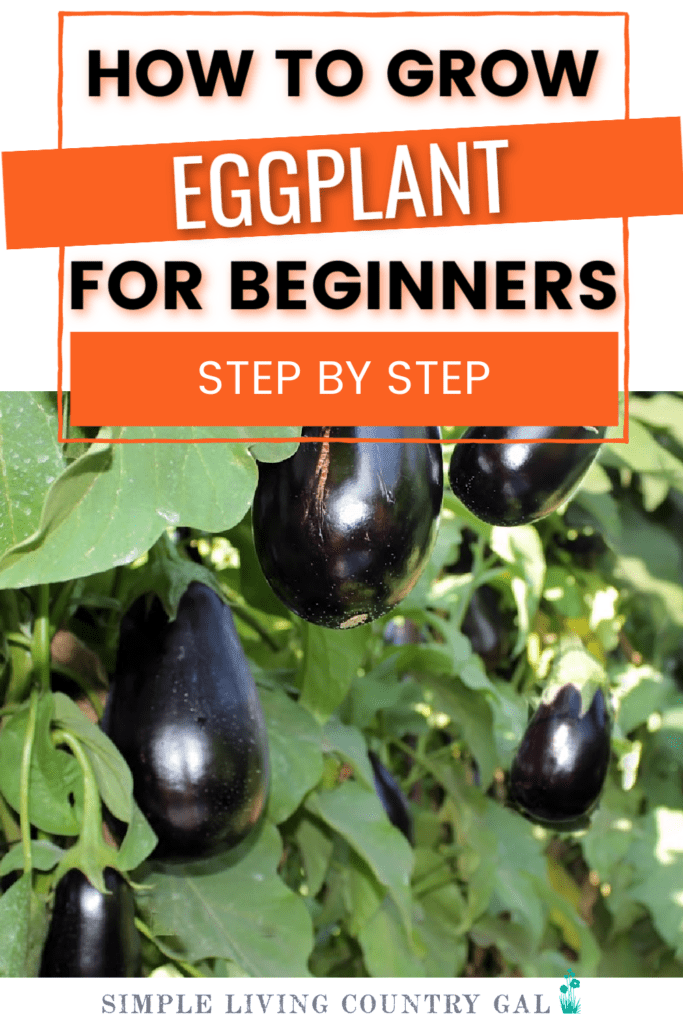
Eggplant is a versatile plant best grown in warmer months. It can be used in a variety of recipes, like lasagna, or you can grill it up for a tasty summer side dish. With so many uses, eggplant is growing in popularity as more and more people are planting it in their summer setups.
Eggplant will flourish quite well in a variety of growing conditions. This means it can be grown in a traditional in-ground garden, in raised beds, even in containers allowing you to plant and grow it almost anywhere.
If your ground doesn’t have healthy soil, you can opt for a raised bed setup, grow bags, or you can use a container. This will allow you to control the type of soil you use. If you choose to use a container, you will have the additional option to move your plants to follow the sun if you don’t get enough sun in one spot throughout the day.
Other Ways to Garden:
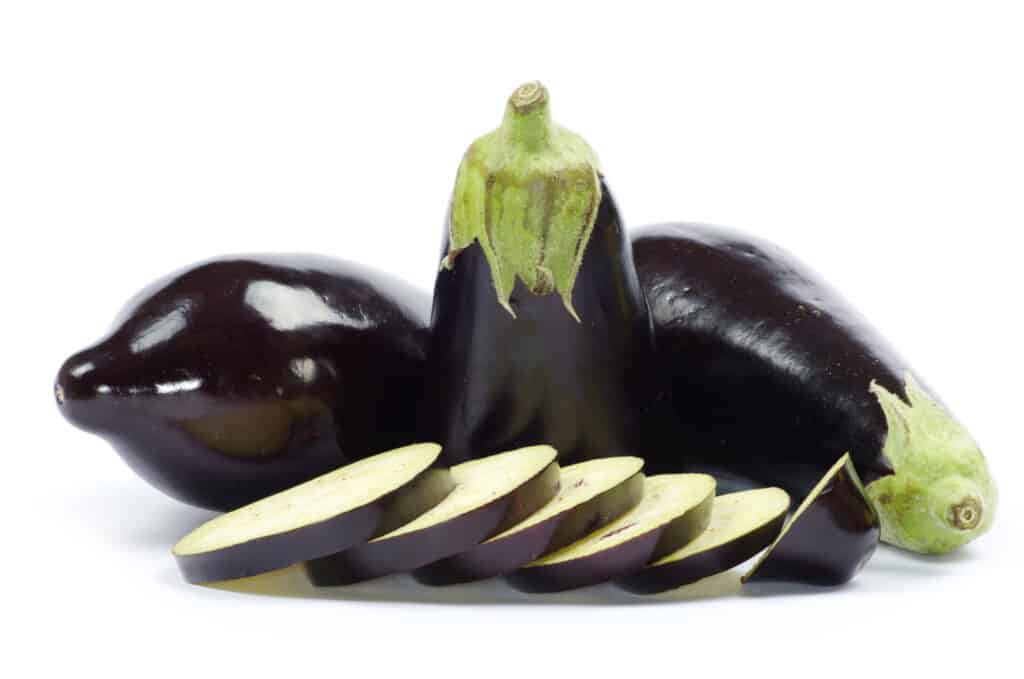
When it comes to eggplant, there are many varieties to choose from, allowing you to grow anything from smaller fruits that produce a bountiful harvest to the larger fruits you often find in grocery stores.
There are three basic types to choose from:
· Globe eggplants – traditional-size fruits that are purple or white. They grow best in warmer climates.
· Japanese eggplants – long, slender fruits that mature quickly. These are a good option for cooler climates.
· Small fruited eggplants – more compact in size. They are perfect for small gardens or containers.
Eggplant Varieties:
· Galine – grows well in the North with a large harvest. It’s a hybrid fruit and grows 6-7 inches. It will mature in about 65 days.
· Black Beauty – an heirloom fruit, the classic eggplant variety. Black Beauties are large, dark purple, and grow about 18-24 inches tall. They are ready to harvest in 70-75 days after transplanting.
· Green Knight – produces long, jade green fruit with dense flesh and fewer seeds. It’s a hybrid that will grow 34-36 inches tall with fruit up to 7 inches.
· Listada De Gandia – this European heirloom variety will produce purple and white streaked fruits on plants that grow up to 14 inches tall. The fruits are egg shaped and up to 8 inches long with a mild flavor and tender skin. Maturity is 80-90 days.
· Pot Black – a great variety for containers as the plants are compact and produce 3-ounce fruits that have no bitter flavor. They mature quickly, in about 55-60 days.
· Purple Blaze – produces neon purple fruits with white streaks. The plants grow 18-20 inches tall with fruits up to 4 inches that are white on the inside.
· White Star – another hybrid fruit that is shiny, white, and sweet. Like most white eggplant, it doesn’t have a bitter taste to it. The plants grow 30-36 inches tall, and fruit grows to 5-7 inches long.
What You Need to Grow Eggplant
Eggplants require both nutrient-rich soil and a lot of sun to grow as well as high warm temperatures. Fortunately, they grow well in both small and large gardens, in raised garden beds, and in containers, as I mentioned earlier, so you have plenty of options when it comes to planting.
AC Infinity Heavy Duty Fabric Pots, 25 Gallon Aeration Reusable Grow Bags 5-Pack with 500G Thick Nonwoven Fabric and Multi-Purpose Rings, for Low Stress Plant Training Fruits, Vegetables, and Flowers


Eggplants are warm season fruits so you’ll need to plant after the last frost has occurred and the ground warms up. They grow fastest when temperatures are between 70° and 85°, slowly when temperatures are cooler.
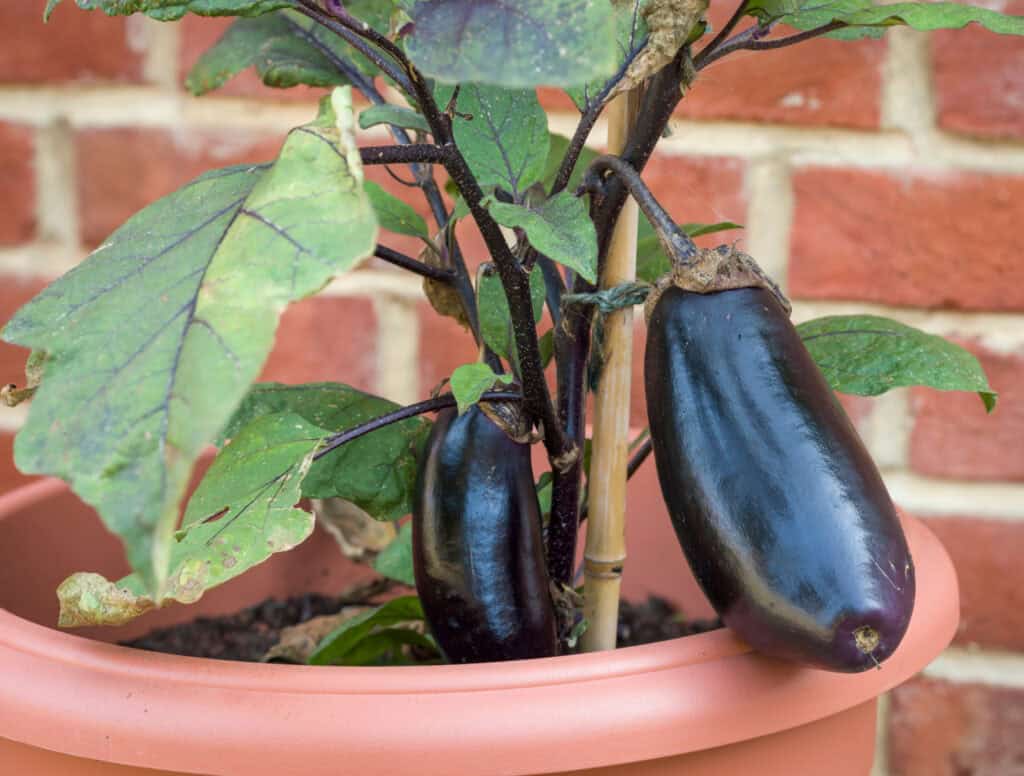
Like tomatoes and peppers, eggplant grows from plants that are tall with beautiful fruit that hangs down from its branches. Plants can grow several feet high so you will want to make sure there’s room for growth and they won’t overshadow any shorter plants, taking away their sun exposure. You’ll also want to plant on staking them or growing them against a trellis as the fruits will weigh the stalks down when they become full.
By adding a stake to your plant early on, you will ensure that your eggplant has the support it needs from the start.
3 Packs Tomato Cages Plant Cages Deformable Up to 48inch Garden Tomato Stakes Vegetable Trellis, Plant Supports Tomato Trellis for Vertical Climbing Plants Flowers Fruits

How to Grow Eggplant
Eggplants can be purchased as 6–8-week-old transplants or started indoors two months in advance to help them mature and produce more quickly once transplanted in your garden.
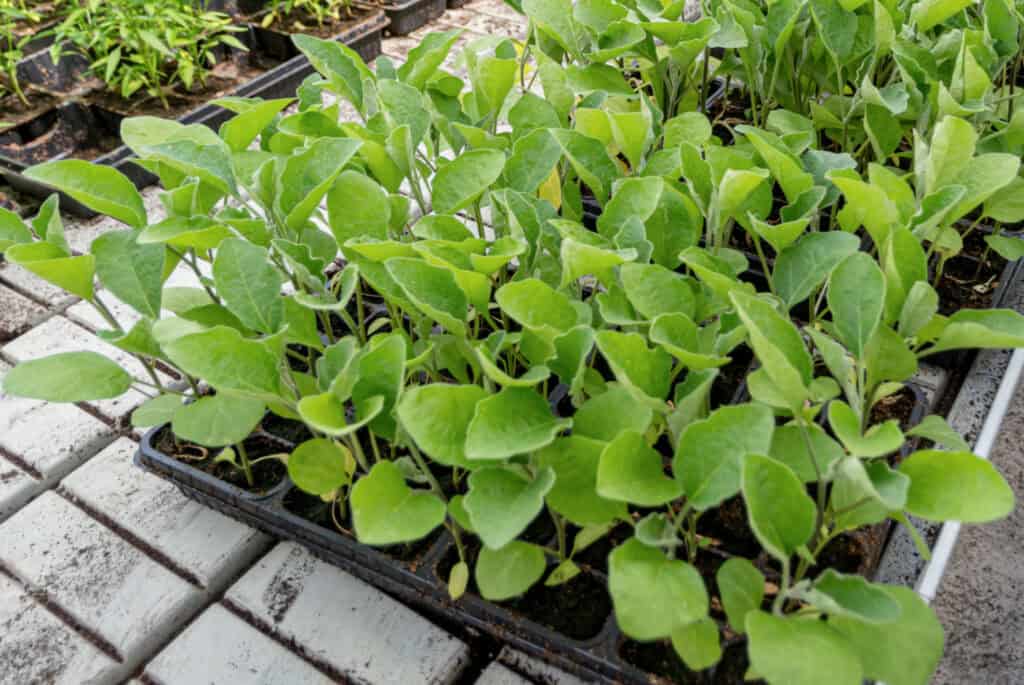
If starting indoors, plant seeds in flats or peat pots at least eight weeks before the last frost. Eggplants like the warmth, and you will find that they will germinate faster in warmer temperatures, about 70° – 90° F.
Due to their love of warmer temperatures, eggplants especially love raised beds or containers where the soil warms more quickly. A great option if you live in a cooler climate that lasts longer in the warmer seasons.
When to Plant Eggplant
For most areas, you will want to plant your eggplant when it’s warm enough to support its growth, usually late April to early May. To help get a head start on your growing seasons, you can start eggplant seeds indoors in late January to early February, and then you can easily transplant them once the ground warms up.
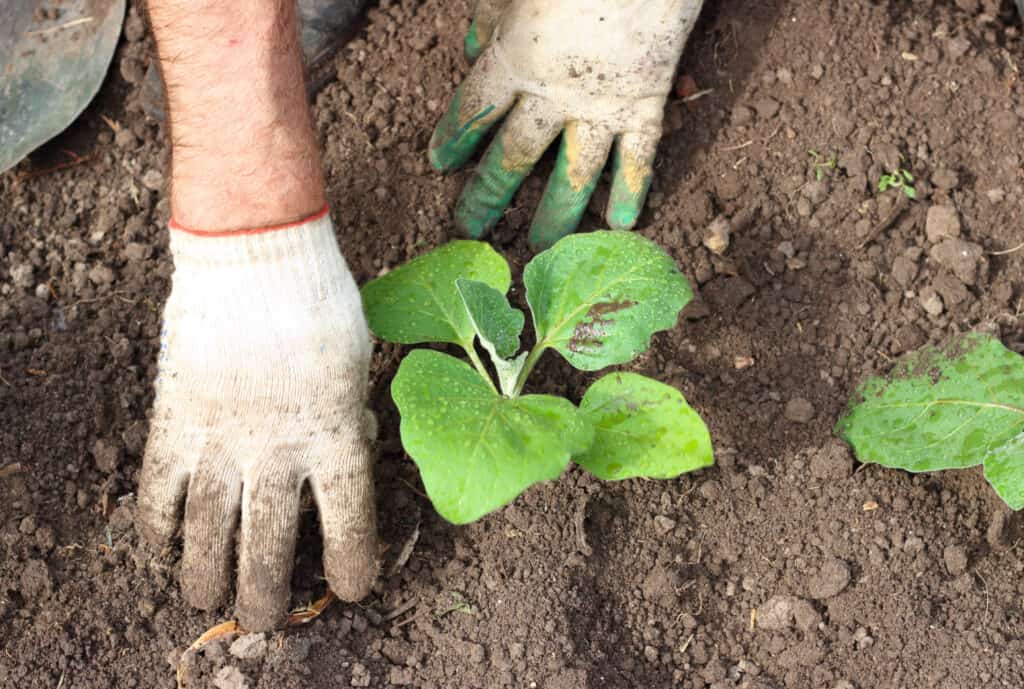
How to Plant Eggplant
Sun and soil are important for growing eggplant and will help the plants to grow a healthy root system. The root’s health is the secret behind every healthy plant. If you are new to gardening and have not yet started one, you can research your property to see where you will have the most successful growing location.
How to Choose a Good Growing Spot
#1. Note the sun throughout the day. Walk your property a few times throughout the day and make a note in your gardening journal. You want an area with at least 6-8 hours of sunlight daily.
#2. Check the soil. You want to have soil that is well-draining and a bit sandy. If drainage is a problem you can add compost to help.
Once your post is chosen, you are ready to plant!
How Many Plants to Plant
Eggplants produce a fair amount of fruit so you shouldn’t need too many plants, about 2-3 per grown adult should be plenty. And good news, since you won’t need to plant many plants, this makes them the perfect fruit for growing in smaller areas.
How Long Does Eggplant Take to Grow?
Depending on the variety that you choose, eggplant can take anywhere from 50-75 days to mature when planting transplanted seedlings, and additional 6-8 weeks if planting seeds so transplants will allow you to harvest sooner.
Once they start to mature, you can expect a steady and bountiful harvest for several weeks.
Temperature
Eggplants prefer warmer temperatures, 70° – 85° F. Because of this, you will want to make sure you don’t plant seeds or transplants before the last frost. If you are new to gardening, you can ask your neighbors when that date will be. Make a note of the date in your gardening journal so you have that record going forward.
Once the warmer temperatures of summer hit, your plants will thrive throughout the growing season.
Sun
Eggplants need a minimum of 6 hours of direct sunlight a day to grow well and produce a nice harvest. You can test your planting area in advance by tracking the amount of sunlight the area gets on a regular basis. If you don’t receive enough light in an area, you may want to consider planting in containers so that you can move them with the sun.
I love to use containers, such as grow bags, whenever possible as it allows me to dress up my outdoor area and bring our produce closer to my kitchen door. A super convenient bonus of container gardening.
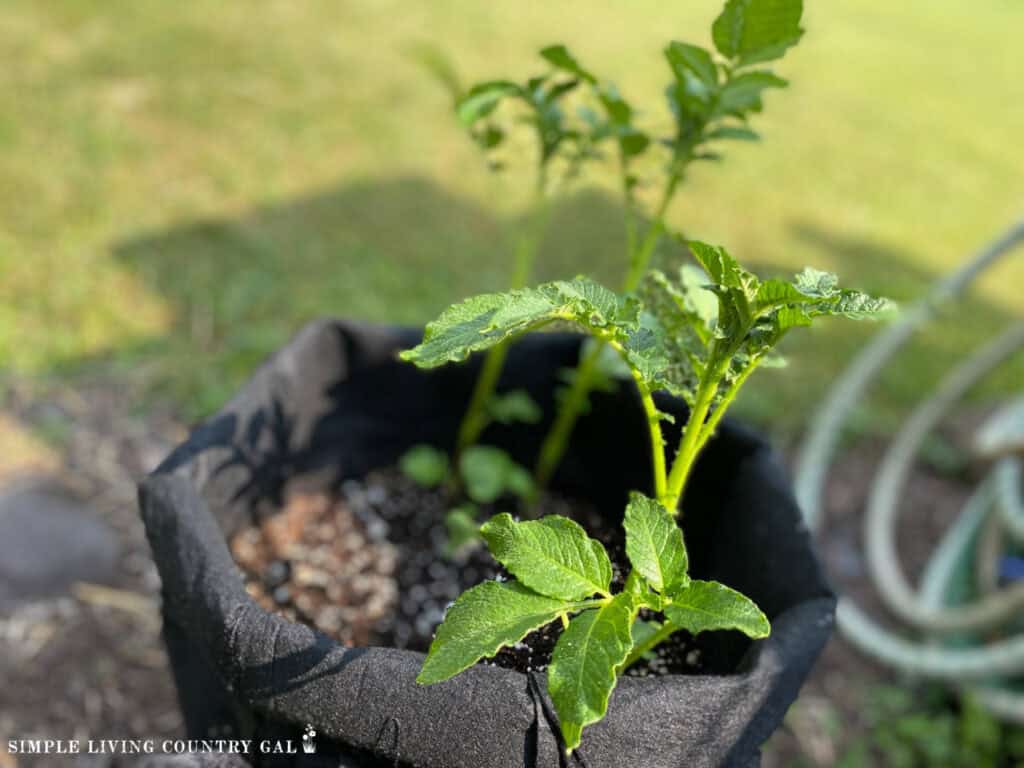
Soil
Eggplants need well-draining, sandy loam or loam soil that is fairly high in organic matter. By having sand in your soil you will allow more room for water. The preferred soil pH is 5.8 to 6.5 to encourage the best growth. The soil will also need to be warm. If it hasn’t quite warmed yet, you can cover the area with black plastic to help it warm up before planting or you can plant in raised beds or containers, which will warm faster than ground soil.
Water
Eggplants need a steady supply of water however it is important to remember not to let the soil get soggy. If it’s not watered enough, the fruit will be small and bitter. If watered too much, it can lead to disease and underproduction of fruit. Don’t let this fine line worry you too much. Just keep an eye on the wetness. You can do so by using the finger test to make sure it’s moist but not soggy. Simply stick your finger down in the soil to an inch deep to check the moisture.
When watering, as with all of your plants, remember to water under the foliage at ground level. This will keep the soil from splashing up onto the plant’s leaves reducing the change of pests or diseases.
Fertilizing
Eggplant requires a moderate amount of fertilizer. You can achieve this by mixing in 1 inch of well-rotted manure or general-purpose fertilizer, such as 5-10-10, throughout the planting bed about a week before planting.
Spacing
Space plants that are 3-4 inches tall about 24-30 inches apart in rows that are 3-4 feet apart. This will give them plenty of room to grow without overcrowding each other as they begin to fill with fruit.
Depth
If planting seeds, you don’t need to plant deep, just about a ¼”. If planting seedlings that you purchased or started indoors, aim to plant just slightly deeper than their existing soil clod.
Growing Tips for Eggplant
Containers: If you’re using pots to grow eggplant, use dark-colored containers, this will allow them to absorb more sunlight as they are growing. Each plant will need a 5-gallon pot or larger that allows for drainage.
Place containers in an area that allows for full sunlight outdoors so that your plants can be sufficiently pollinated. Finally, using a premium potting mix will help to avoid disease.
Transplants: If you’re purchasing transplants, do your best to purchase high-quality plants. Avoid plants that are tall, spindly, or young without blossoms. These plants will produce less than optimal yields.
Fertilizer: Feed your plants at least once a month with fish emulsion or compost tea.
Growing Care: Remove any withered leaves and stake or trellis the plants as needed for best growth.
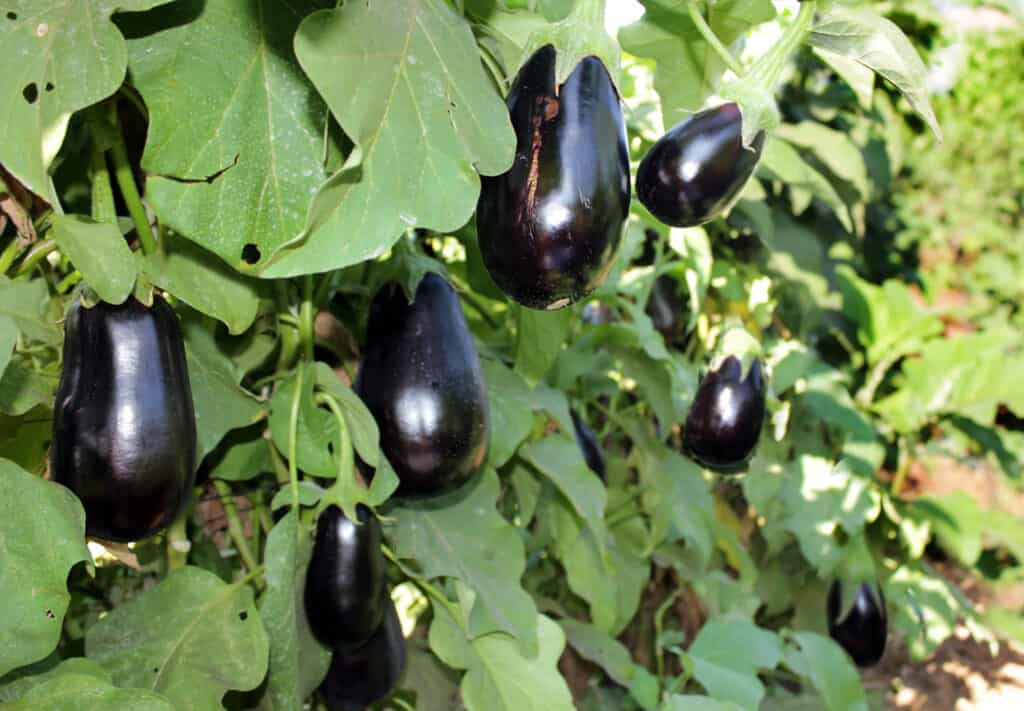
Pollination: Self-fertile eggplant flowers can be fertilized by the wind, but bee pollination improves the fruit quality and size. Creating an environment that is attractive to bees will help your garden flourish.
Seedlings: If transplanting seedlings, help them acclimate to the outdoors easier with a process known as “hardening off.” Put the seedlings outside for a short time, a half hour or so, on the first day then gradually increase the amount of time they spend outside each day for about a week to ten days.
Get tips on How to Harden Your Seedlings here.
Planting: Remove any fruit or flowers that have started to develop before transplanting so that the plant can put all of its energy into the root and stem development.
Support: Stake the plants right away, about an inch or two from the plant, to provide support as they climb.
Cages: As plants grow, they will fall over once they become loaded with fruit. You can also use cages meant for tomatoes to help your plants stay upright.
Watering: Water well to moisten the soil to about 6 inches deep, being sure to keep the soil moist but not soggy. The most crucial stage for watering is when the fruit starts to develop.
How to Harvest Eggplant
Eggplants taste best when harvested young. Small fruits have the best taste and frequent harvesting encourages more fruit production. When harvesting fresh fruit, be careful to clip rather than yank them from their stem. This will help the stem to stay intact encouraging a continuous production of fruit throughout the season.
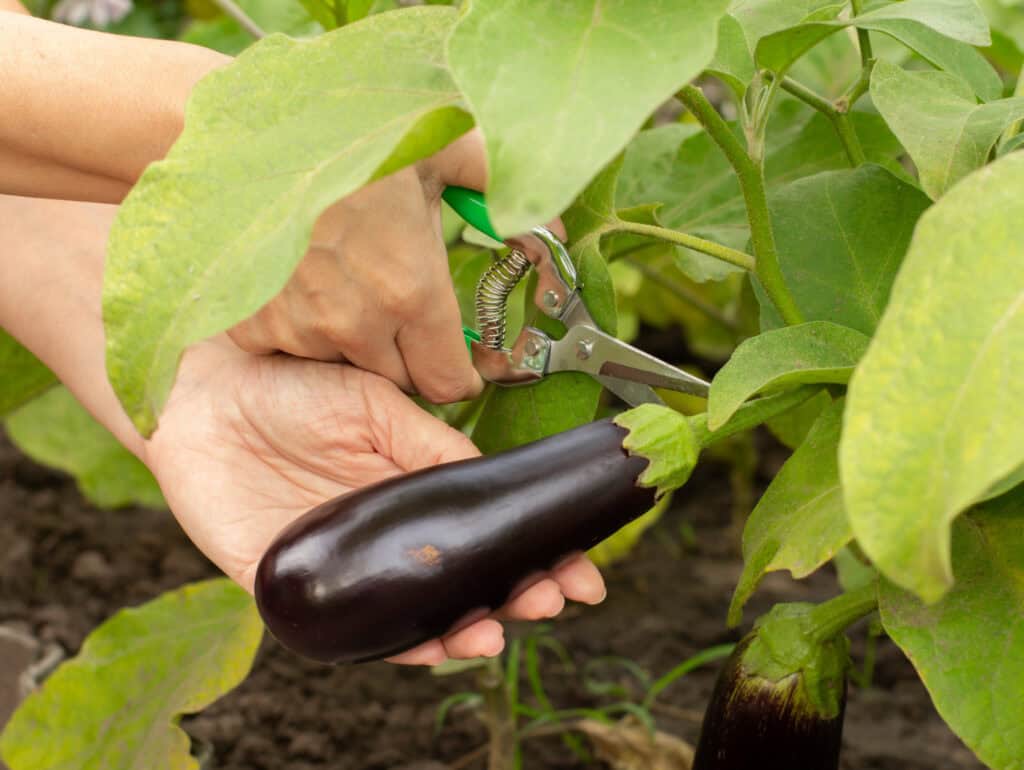
The best way to determine if it’s time to harvest is by checking the fruit’s skin. Fruits are ripe and ready to harvest when it doesn’t rebound after being touched with a finger.
Eggplants are usually ready to harvest 60-80 days after transplanting seedlings or 100-120 days after planting seeds. Depending on your temperatures, you can expect to harvest anytime from late June to early October.
How to Store Eggplant
Eggplants do not freeze or can very well so it’s best to use them within a day or two of harvesting. Do not store eggplant in the refrigerator, but rather in a cool, moist, and well-ventilated area.
What Diseases and Pests to Watch For
There are a few pests and diseases to keep an eye out for when growing eggplant.
- Flea beetles
- Aphids
- Potato beetles
- Tomato hornworms
- Powdery Mildew (This can be avoided with plenty of sun, good air circulation, and watering at the base to avoid the foliage and fruit)
Use row covers to deter pests early into the growing season and until the plants are large enough to withstand a little bit of damage. If pests persist, you can leave the row covers on until it’s time to harvest. When using row covers be sure to allow for pollination as this is crucial for developing fruit.
If flowers form but then fall off or the fruit doesn’t develop, it’s most likely that the temperatures are too cold. This is also the case if fruits are small and not fully growing. Eggplants like it warm to hot temperatures while growing. Daytime temperatures are perfect for them at 80° to 90° F during the day and 60° to 65° F at night.
Another issue to watch out for is strange or misshapen fruit. This is usually caused by inconsistent or low moisture.
GREEN MOUNT Watering Wand, 24 Inches Sprayer Wand with Superior Stainless Head, Perfect for Hanging Baskets, Plants, Flowers, Shrubs, Garden and Lawn




How to Use Eggplant
Eggplant can be used in many recipes and it is quickly gaining in popularity with many families.
You can toss eggplant in oil and seasoning to roast, grill them with other veggies from your garden, or even use them as a main dish as stuffed eggplant, eggplant parmesan, and even eggplant and white bean meatballs. Roasted, grilled, sautéed, or baked, they’re something the whole family can enjoy. And since the plants will produce fruit over and over again, they’ll keep you stocked all summer.
Eggplants are both delicious and versatile plus they’re easy to grow, making them perfect for beginner gardeners.













